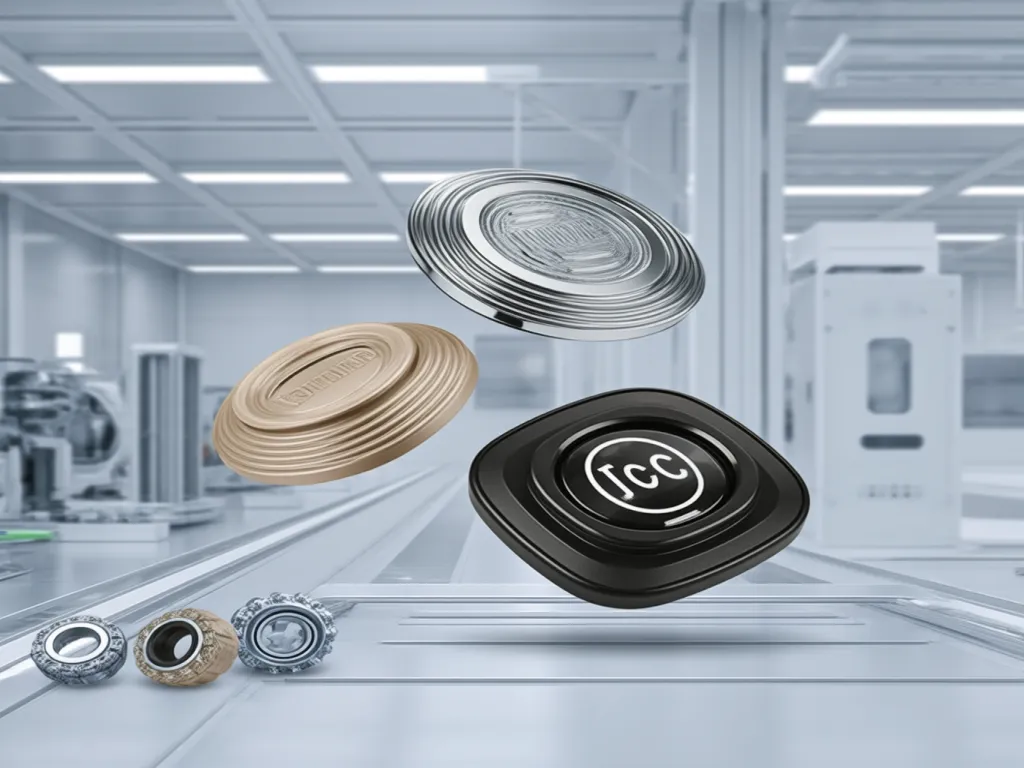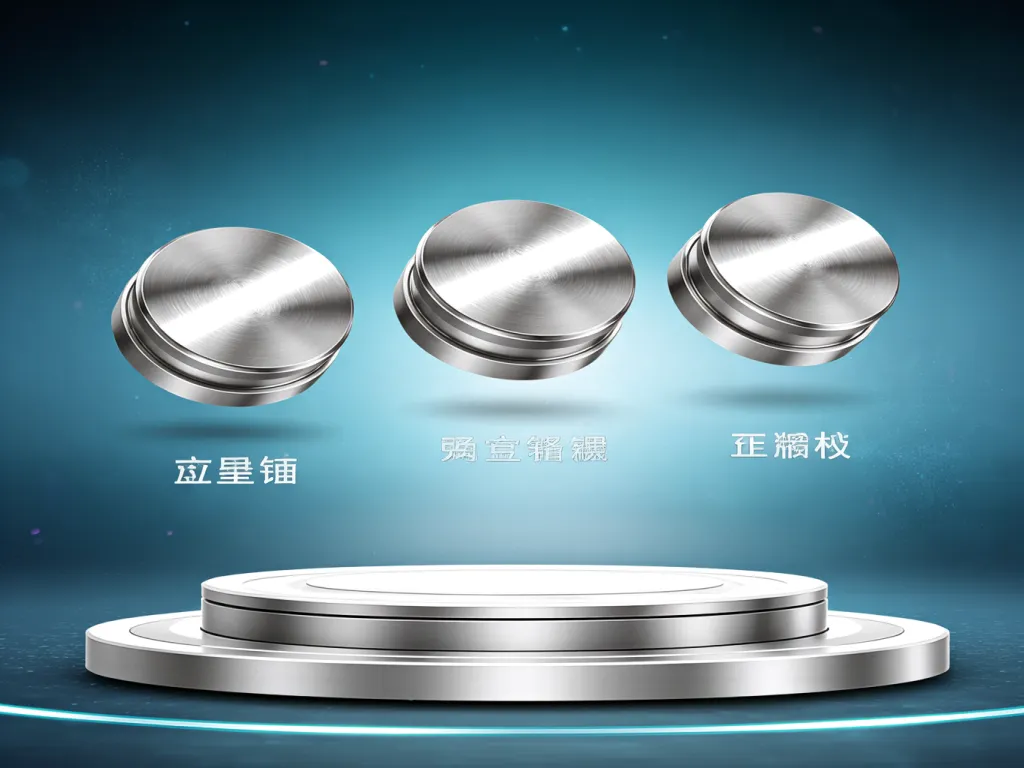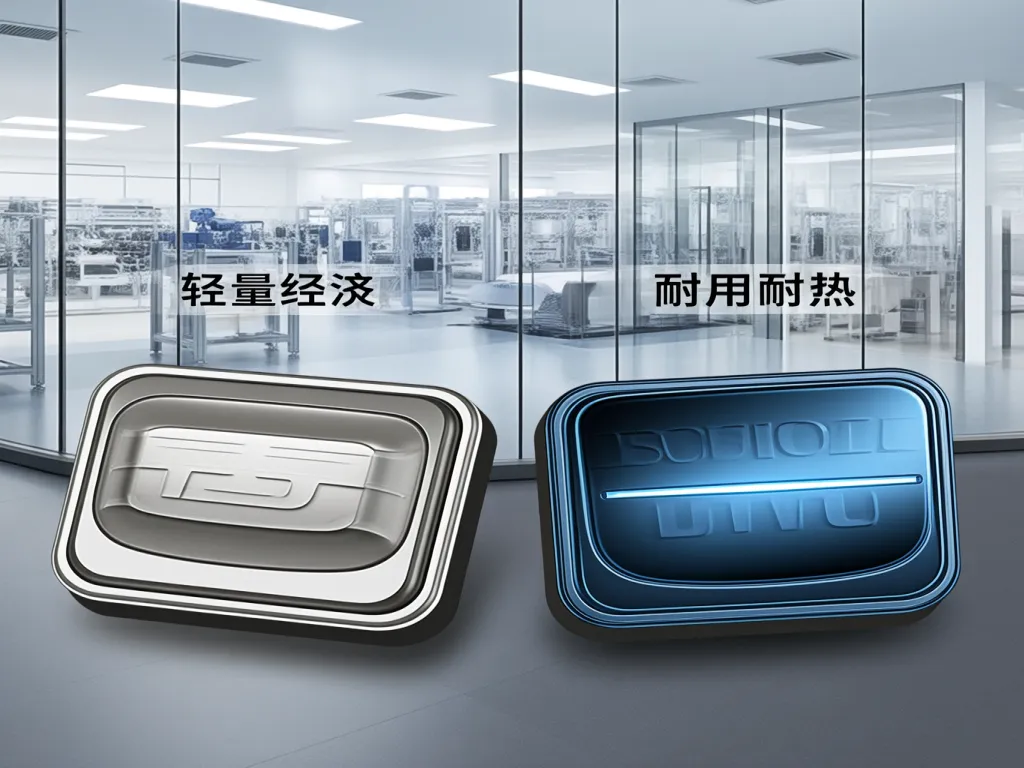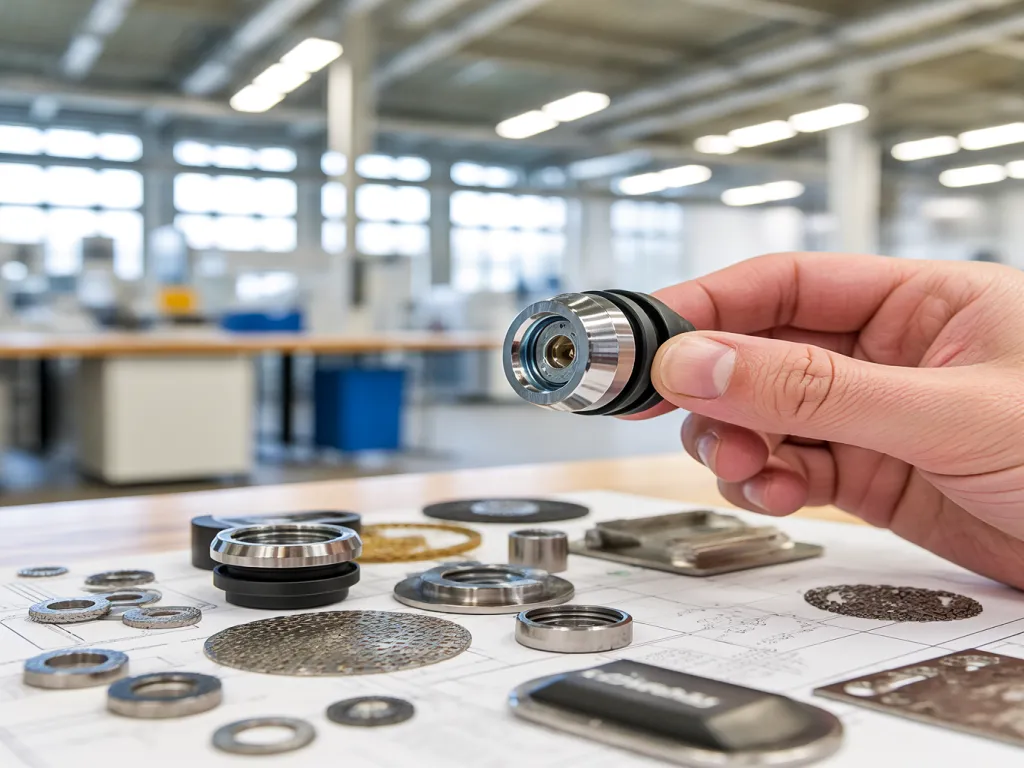Durable Push Buttons: A Material Science Guide

In the high-stakes world of automotive manufacturing, every component counts. Among these, the humble push button often goes unnoticed—until it fails. But did you know the material of your push button can dramatically impact its durability and performance? Whether you’re sourcing for a high-pressure engine compartment or a cost-sensitive dashboard, understanding the science behind push button materials is key. Let’s dive into why choosing the right push button isn’t just about aesthetics—it’s about reliability you can trust.

Metal-Material Push Buttons: Analyzing the Pros and Cons of Stainless Steel, Aluminum Alloys, and More
When it comes to push buttons in the automotive industry, the choice of material isn’t just about aesthetics—it’s a critical decision affecting performance, durability, and safety. Metal-material push buttons, particularly those made from stainless steel and aluminum alloys, have carved out a niche for themselves due to their robustness and reliability. But how do they stack up against each other, especially in extreme conditions like high temperatures, high pressure, and corrosive environments? Let’s dive in.
First up, stainless steel push buttons. Renowned for their exceptional corrosion resistance, stainless steel buttons are a go-to for applications where moisture or chemical exposure is a concern. This is thanks to the chromium content, which forms a passive oxide layer on the surface, protecting the underlying metal from rust and corrosion. But stainless steel isn’t just about looks and longevity; it’s also got the strength to withstand significant mechanical stress, making it ideal for high-pressure environments. For those seeking durable options, consider exploring our range of waterproof stainless steel push buttons.
However, stainless steel isn’t without its drawbacks. One of the main considerations is cost. Stainless steel tends to be pricier than other metals, which can impact your budget, especially if you’re outfitting a large number of devices. Additionally, while it’s strong, stainless steel can be heavier, which might not be ideal for applications where weight is a critical factor.
Now, let’s talk about aluminum alloys. Aluminum is known for its lightweight nature, making it a popular choice in industries where reducing weight is paramount, such as automotive and aerospace. But don’t let its lightness fool you; aluminum alloys can be surprisingly strong and durable. They’re also excellent conductors of heat and electricity, which can be advantageous in certain applications.
When it comes to high-temperature environments, aluminum alloys hold their own reasonably well, though they may not match the heat resistance of stainless steel. However, they do have a higher thermal conductivity, meaning they can dissipate heat more efficiently, which can be beneficial in preventing overheating.
Corrosion resistance is another area where aluminum alloys shine, though not to the same extent as stainless steel. Aluminum naturally forms a protective oxide layer, similar to stainless steel, but this layer can be more susceptible to damage in highly corrosive environments. That said, with proper coatings or anodizing, aluminum push buttons can achieve excellent corrosion resistance, extending their lifespan significantly.
So, how do you choose between stainless steel and aluminum alloy push buttons? It really boils down to your specific needs. If you’re operating in a highly corrosive environment or need maximum durability and strength, stainless steel might be the way to go. On the other hand, if weight reduction is a priority and you’re working in a less aggressive environment, aluminum alloys could be the perfect fit.
But what about other metal materials? There’s brass, for instance, which offers good corrosion resistance and electrical conductivity, though it’s not as strong as stainless steel. Then there’s titanium, a super-strong, lightweight metal with excellent corrosion resistance, but it comes with a hefty price tag.
Ultimately, the choice of metal material for your push buttons should be based on a thorough evaluation of your application’s requirements. Consider factors like temperature resistance, pressure tolerance, corrosion resistance, weight, and cost. And don’t forget to factor in the long-term maintenance and replacement costs, as these can significantly impact your bottom line over time.
In conclusion, metal-material push buttons, whether made from stainless steel, aluminum alloys, or other metals, offer a range of benefits that make them ideal for the automotive industry. By understanding the pros and cons of each material and how they perform in extreme conditions, you can make an informed decision that ensures your devices operate reliably and safely for years to come.
Stainless Steel Push Buttons: Strength and Corrosion Resistance
Stainless steel push buttons are the heavyweights of the metal push button world. Their chromium content forms a passive oxide layer, offering unparalleled corrosion resistance. This makes them perfect for applications exposed to moisture or chemicals. They’re also incredibly strong, capable of withstanding significant mechanical stress, making them ideal for high-pressure environments. However, their strength comes at a cost—both in terms of price and weight. If you’re looking for a push button that can take a beating and last a lifetime, stainless steel is a solid choice. For a specific example, check out our IP67 IK09 stainless steel push button.
Aluminum Alloy Push Buttons: Lightweight and Efficient
Aluminum alloy push buttons are the go-to for applications where weight reduction is crucial. They’re surprisingly strong for their weight and excellent conductors of heat and electricity. While they may not match stainless steel’s heat resistance, their higher thermal conductivity helps dissipate heat efficiently, preventing overheating. Corrosion resistance is decent, though not as robust as stainless steel. With proper coatings, they can achieve excellent longevity. If you’re after a lightweight, efficient push button, aluminum alloys are worth considering. For instance, our 22mm waterproof LED push button showcases the benefits of aluminum alloy construction.
Other Metal Materials: Exploring Alternatives
Beyond stainless steel and aluminum alloys, there are other metal materials to consider. Brass offers good corrosion resistance and electrical conductivity, though it’s not as strong. Titanium, on the other hand, is a super-strong, lightweight metal with excellent corrosion resistance, but it comes with a premium price tag. When exploring alternatives, weigh the pros and cons carefully, considering factors like temperature resistance, pressure tolerance, and cost. For those interested in specialized applications, our elevator push button offers a unique blend of durability and functionality.

Plastic Material Push Buttons: Exploring ABS, PC, and Their Balance of Lightweight Design, Cost Efficiency, and Durability
When it comes to selecting the right material for push buttons in the automotive industry, plastic options like ABS (Acrylonitrile Butadiene Styrene) and PC (Polycarbonate) stand out for their unique blend of properties. Let’s dive into the characteristics of these materials and how they strike a balance between being lightweight, cost-effective, and durable—key factors that can make or break your choice for automotive applications. Whether you’re looking for a self-locking push button or a momentary switch, understanding material properties is crucial.
ABS is a popular choice for push buttons due to its excellent impact resistance and toughness. It’s relatively lightweight compared to metals, making it ideal for applications where reducing weight without compromising strength is crucial. But what sets ABS apart is its cost-effectiveness. Manufacturing push buttons from ABS is generally less expensive than using metals, offering significant savings without sacrificing much in terms of durability. However, ABS does have its limitations. While it performs well under normal conditions, it may not hold up as well in extremely high-temperature environments, which is something to consider if your application involves exposure to intense heat.
On the other hand, PC offers a different set of advantages. Known for its exceptional clarity and optical properties, PC is often used in applications where transparency is desired. But beyond aesthetics, PC boasts impressive impact strength and heat resistance, making it a more robust option than ABS in harsher conditions. This durability comes at a slightly higher cost, though. PC push buttons tend to be pricier than their ABS counterparts, reflecting the material’s superior performance characteristics. Yet, for applications demanding high durability and resistance to environmental stressors, the investment in PC can be justified by the extended lifespan and reduced maintenance costs over time.
So, how do you decide between ABS and PC for your automotive push buttons? It boils down to understanding your specific needs. If you’re looking for a cost-effective solution that offers good durability for general-purpose use, ABS might be your go-to. Its lightweight nature and resistance to everyday wear and tear make it a reliable choice for many automotive applications. But if your project requires push buttons that can withstand extreme temperatures, chemicals, or physical impacts, then PC’s enhanced durability and heat resistance could be worth the extra cost.
In the end, the choice between ABS and PC—or even a combination of both in certain designs—depends on finding the right balance for your application. Consider factors like the operating environment, expected lifespan, budget constraints, and any specific performance requirements. By carefully evaluating these aspects, you can select a plastic material that not only meets but exceeds your expectations for push buttons in the automotive industry.
ABS Push Buttons: Lightweight and Cost-Effective
ABS push buttons are a staple in the automotive industry for their affordability and decent durability. They’re easy to manufacture, allowing for cost savings that can be passed on to customers. Plus, their lightweight nature makes them ideal for reducing the overall weight of vehicles, which is crucial for improving fuel efficiency and handling. For those seeking high-performance push buttons with these features, ABS is a great option. However, it’s important to note that ABS may not be the best choice for applications involving prolonged exposure to high temperatures, as its performance can degrade under such conditions.
PC Push Buttons: Durable and Heat-Resistant
PC push buttons, with their superior impact strength and heat resistance, are the go-to for applications demanding high durability. They can withstand harsher environments and physical impacts better than ABS, making them suitable for use in areas prone to extreme temperatures or chemical exposure. The trade-off is a slightly higher cost, but the investment pays off in terms of extended product lifespan and reduced need for replacements. For automotive manufacturers looking for long-term reliability, PC push buttons offer a compelling solution. For those in need of waterproof push buttons with these characteristics, PC is an excellent choice.

Composite Material Push Buttons: Exploring the Innovative Application of Metal-Plastic Hybrids to Enhance Overall Performance
When it comes to push buttons in the automotive industry, the choice of material can make or break the performance and longevity of these components. While pure metal and plastic push buttons each have their own set of advantages and limitations, the real game-changer lies in the innovative use of composite materials. By blending metal and plastic, engineers can create push buttons that leverage the best of both worlds, resulting in enhanced durability, functionality, and cost-effectiveness. So, how exactly does this hybrid approach work, and what benefits does it bring to the table? Let’s dive deeper. First off, why consider a composite material at all? Well, metal push buttons, such as those made from stainless steel or aluminum, are known for their robustness and resistance to extreme temperatures and pressures. They’re the go-to choice for applications where durability is paramount. However, metals can be heavy, expensive, and prone to corrosion if not properly treated. On the other hand, plastic push buttons, crafted from materials like ABS or PC, offer light weight, cost efficiency, and resistance to certain chemicals. Yet, they may lack the strength and heat resistance of their metal counterparts. Enter the composite material push button. By strategically combining metal and plastic, designers can create a component that is both strong and lightweight, corrosion-resistant yet affordable. For instance, a push button might feature a metal core for structural integrity and heat dissipation, surrounded by a plastic casing for insulation, ergonomic design, and cost savings. This synergy allows the push button to perform optimally in environments where pure metal or plastic would fall short. But how is this blend achieved in practice? The process often involves advanced manufacturing techniques like injection molding, where molten plastic is injected around a pre-formed metal insert. Alternatively, overmolding can be used, where a second layer of material is molded over an existing part to enhance its properties. These methods ensure a seamless integration of materials, resulting in a push button that functions as a single, cohesive unit. The benefits of composite material push buttons extend beyond just physical properties. They also offer design flexibility, allowing for custom shapes, colors, and textures that can enhance the user experience. Moreover, by optimizing the material mix, manufacturers can tailor the push button’s performance to specific applications, whether it’s withstanding the harsh conditions of an engine compartment or providing a tactile, responsive feel in a dashboard control. For those seeking high-performance push buttons, options like the 12mm push button switch or the 16mm waterproof push button switch offer excellent examples of composite material designs tailored for automotive use. Of course, choosing the right composite material isn’t a one-size-fits-all decision. It requires a thorough understanding of the application’s requirements, including environmental factors, expected lifespan, and cost constraints. But when done right, the result is a push button that not only meets but exceeds expectations, offering a level of performance and reliability that pure materials can’t match. So, if you’re in the market for push buttons that offer the best of both metal and plastic, look no further than composite materials. They represent the future of automotive component design, where innovation meets practicality to create solutions that are built to last.
The Science Behind Composite Materials
Understanding the science behind composite materials is crucial to appreciating their value in push button design. At its core, a composite material is made up of two or more distinct phases, each contributing unique properties to the final product. In the case of metal-plastic hybrids, the metal provides strength and thermal conductivity, while the plastic offers flexibility, insulation, and design versatility. This combination allows for a push button that can withstand high temperatures and mechanical stress without sacrificing ease of use or aesthetic appeal. The key to successful composite design lies in the interface between the metal and plastic components. A strong bond is essential to ensure that the materials work together seamlessly, rather than acting as separate entities. This is achieved through careful selection of materials, surface treatments, and manufacturing processes that promote adhesion and compatibility.
Applications and Advantages in the Automotive Industry
The automotive industry is a prime example of where composite material push buttons shine. From engine control units to dashboard interfaces, these components must perform reliably under a wide range of conditions. Composite push buttons excel in such environments, offering a balance of durability, cost, and functionality that pure metal or plastic can’t achieve. For instance, in a high-temperature engine bay, a composite push button with a metal core can dissipate heat effectively, preventing damage to the plastic casing and ensuring consistent operation. Meanwhile, in a driver’s cabin, a composite button can provide a tactile, responsive feel without adding unnecessary weight or cost. The advantages of composite materials extend to maintenance and longevity as well. By combining corrosion-resistant metals with durable plastics, manufacturers can create push buttons that require less upkeep and have a longer service life. This translates to lower total cost of ownership for automotive manufacturers and end-users alike.
Selecting the right push button for your automotive application goes beyond surface-level choices. From the rugged reliability of metal to the lightweight cost-effectiveness of plastic, and the innovative potential of composites, each material offers unique advantages. Remember, a durable push button isn’t just a component—it’s an investment in your equipment’s longevity. Use this guide to make an informed decision tailored to your specific needs. Want to explore custom solutions? Reach out to our team for personalized recommendations that keep your operations running smoothly. After all, when it comes to automotive electronics, every push counts.

